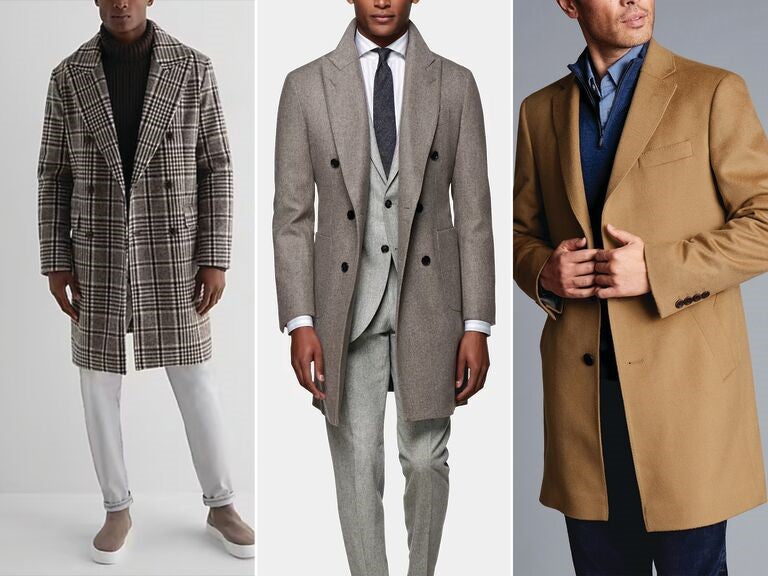What is the Difference Between a Topcoat and an Overcoat?
Posted by DANISH FAREED

When it comes to navigating the world of men's outerwear, the terms "topcoat" and "overcoat" are often used interchangeably, leading to confusion about their differences. While both serve the primary purpose of keeping the wearer warm, they possess distinct characteristics that set them apart.
In this exploration, we will delve into the nuances that define a topcoat and an overcoat.
Defining the Topcoat
A topcoat is a stylish and lightweight outer garment designed for formal or semi-formal occasions. Typically made from luxurious fabrics like cashmere, wool, or a blend of high-quality materials, the topcoat is tailored to provide a sleek and polished appearance.
One of its defining features is its length, usually falling just below the knee. This length contributes to its refined aesthetic, making it a perfect choice for professional settings or events with a sophisticated dress code.
Key Characteristics of a Topcoat
- Length: Falls below the knee.
- Fabric: Often made from premium materials like cashmere or high-quality wool.
- Style: Tailored for a sleek and formal appearance.
- Occasions: Ideal for formal and semi-formal settings.
Exploring the Overcoat
On the other hand, an overcoat is a more versatile and heavy-duty outer garment, designed with a primary focus on insulation and warmth. Overcoats are typically longer than topcoats, extending all the way to the ankles.
This extended length provides enhanced protection against the cold weather, making overcoats a practical choice for casual or everyday wear. Unlike topcoats, overcoats may be crafted from a wider range of materials, including wool blends, tweed, and other durable fabrics.
Key Characteristics of an Overcoat
- Length: Extends to the ankles for maximum warmth.
- Fabric: Can be made from a variety of materials, including heavy wool blends and tweed.
- Style: Focuses on functionality and warmth, making it suitable for casual wear.
- Occasions: Versatile enough for everyday use in cold climates.
Distinguishing Factors: Length and Functionality
The primary factor that distinguishes a topcoat from an overcoat is the length. While both garments are designed to provide warmth, the topcoat's shorter length contributes to a more formal appearance, aligning it with events where a polished look is essential.
On the other hand, the overcoat's extended length is a testament to its practicality, offering enhanced protection against the elements, especially in harsh winter conditions.
Choosing Based on Occasion
- Formal Events: Opt for a topcoat when attending formal gatherings or professional settings, where a sophisticated look is preferred.
- Everyday Wear in Cold Climates: Choose an overcoat for daily use in colder climates, providing both style and functionality to combat chilly weather.
Conclusion
In conclusion, understanding the difference between a topcoat and an overcoat lies in their length and intended purpose. The topcoat, with its shorter length and emphasis on refined style, is perfect for formal occasions.
Meanwhile, the overcoat, designed for maximum warmth with its extended length and diverse fabric options, is the go-to choice for everyday wear in colder climates. By recognizing these distinctions, individuals can make informed decisions when selecting outerwear that aligns with both their style preferences and the demands of the weather.






















